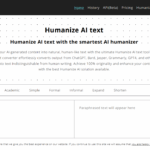In this piece, I will explore the Best Uses of AI for Your Written Assignment. AI tools efficiently help users develop their writing, as they assist in grammar checking, clearing, structural, and stylistic enhancements. Moreover, the immediacy of AI tools allows students to focus on the specific areas of an assignment that need major revisions.
Understanding how to make writing clear and accurate as well as professional increases with the aid of such tools. These offer distinct, tailored comments on the assignment which facilitate the learning process.
Why Use Ways to Get AI Feedback on Your Written Assignment
Immediate Feedback: AI tools highlight grammatical, spelling, clarity, and structural issues immediately, making it easier for you to revise your work.
Helps you Write Better: AI helps learners develop writer’s voice by identifying errors accompanied by corrections and style suggestions.
Customized Feedback: The latest AI technologies provide feedback based on assignment types, writing objectives, and learners’ strengths and weaknesses.
Time Efficient: You will not have to manually proofread to the same extent, and you will no longer have to wait for your teacher to provide feedback.
Better Quality Work: Feedback provided by AI improves the clarity, professionalism, and overall quality of work and assignments.
Key Point & Best Ways to Get AI Feedback on Your Written Assignment List
| Tool | Key Points / Features |
|---|---|
| Grammarly | Real-time grammar, spelling, and style corrections; tone detection; plagiarism checker |
| TeacherToolAI | Automated feedback for educators; grading suggestions; personalized student insights |
| Musely AI Feedback Generator | Generates detailed writing feedback; suggestions for clarity and structure; customizable feedback prompts |
| Gradescope | AI-assisted grading; supports multiple-choice and free-response; rubric-based evaluations |
| Formative AI | Provides instant feedback on assignments; formative assessment tools; tracks student progress |
| Mentimeter AI | Interactive AI-powered feedback in presentations; polls and quizzes; engagement analytics |
| Quill.org | Writing and grammar practice with AI feedback; sentence-level corrections; skill-building exercises |
| Scribbr AI Proofreader | Academic proofreading; style and citation checks; plagiarism detection |
| CoGrader | Automated assignment grading; code and text evaluation; detailed feedback reports |
| ChatGPT (with custom GPTs or plugins) | Customizable AI feedback; instant suggestions; can provide explanations, summaries, and edits |
1. Grammarly
Grammarly is one of the best ways to get AI feedback regarding your assignments since it goes beyond basic spell-checking. Its advanced AI examines and assesses your work on grammar, punctuation, style, clarity, and even tone, and provides feedback on ways to improve it.
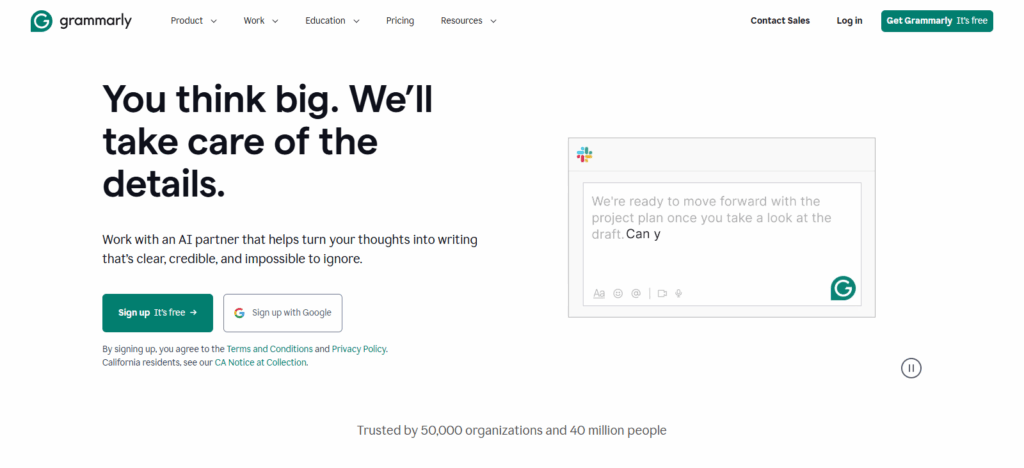
Unlike other tools, Grammarly provides customized feedback according to the type of writing you want to accomplish, whether it is academic, creative, or business.
Seeing feedback in real time is a huge plus since it points out problematic sentence structures, excessive verbosity, and repetitive statements, all of which speeds up and improves the revision process. Grammarly’s greatest feature is that it teaches you how to write better by giving extensive contextual feedback instead of just telling you the mistakes that you made.
Pros & Cons Grammarly
Pros:
- Real-time grammar & spelling correction – Instantly fixes mistakes while you type.
- Writing style suggestions – Offers tone, clarity, and conciseness improvements.
- Plagiarism detection – Checks content against billions of web pages.
Cons:
- Limited free features – Advanced suggestions require a premium subscription.
- Not context-specific for academic assignments – May miss nuanced academic feedback.
- Over-reliance risk – Users may depend too much on AI and ignore their own writing skills.
2. TeacherToolAI
TeacherToolAI offers one of the best AI feedback services on written assignments as it caters to students as well as educators who want to enhance academic work.
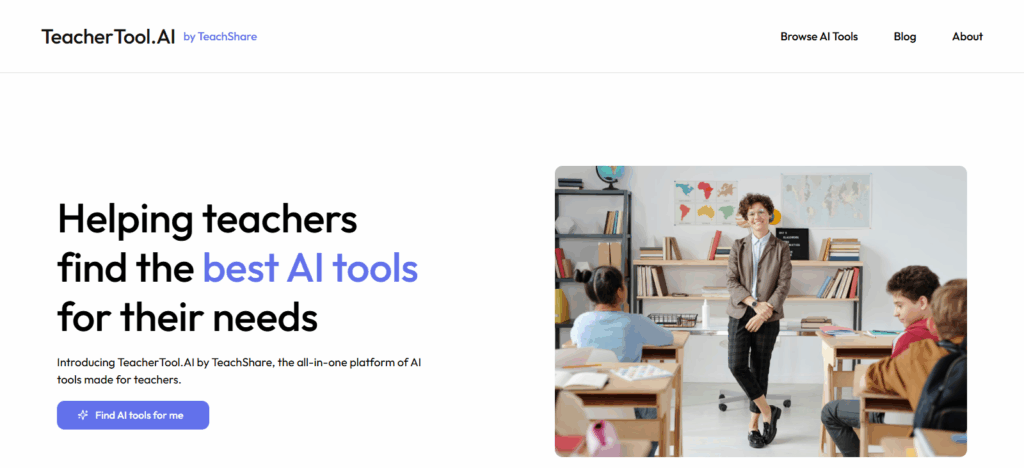
Unlike other writing tools which offer generic feedback, TeacherToolAI offers personalized feedback that is constructive with respect to the requirements of the assignment. It identifies strengths, and weaknesses, and determines the clarity, structure, and relevance of the content while providing feedback based on educational standards.
It offers the unique advantage of providing learners with helping suggestions that explain the ‘why’ behind changes which improves their writing skills over time. Feedback on TeacherToolAI is corrective but also highly educational and constructive toward the goals set.
Pros & Cons TeacherToolAI
Pros:
- Designed for educators & students – Focused on learning improvement.
- Detailed feedback on structure – Highlights areas to improve clarity and organization.
- Customizable rubric options – Teachers can set feedback criteria.
Cons:
- Subscription-based – Full access can be expensive for students.
- Interface may be complex – New users might find navigation tricky.
- Limited language support – Primarily optimized for English.
3. Musely AI Feedback Generator
Musely AI Feedback Generator is excellent for getting AI Feedback on your written assignments because it is great at personalized, thorough analyses that go beyond simple corrections.
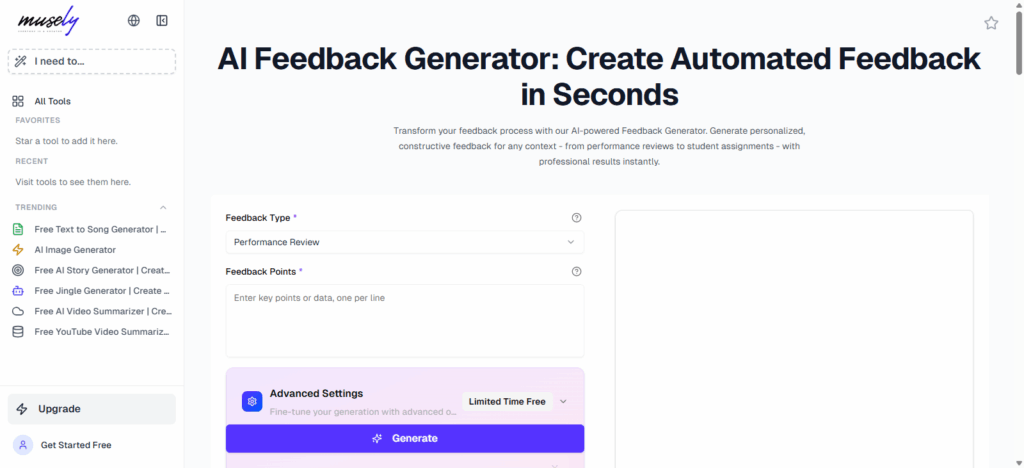
It assesses your work for issues related to your sentences, coherence, clarity, and flow, and provides specific recommendations to enhance your work stylistically and substantively. Its peculiar ability to craft insightful and constructive feedback within context relative to the author’s purpose, whether it be academic, creative, or professional, is remarkable.
It provides specific issues and alternative suggestions to address them, allowing Musely AI to be more hands on sketching the frameworks for achieving a refined, effective, and more polished piece of writing, rather than simply focusing on erroneous parts.
Pros & Cons Musely AI Feedback Generator
Pros:
- Quick and automated feedback – Saves time on proofreading.
- Suggestions for tone and style – Aims for clearer texts.
- Document Integration – In collaboration with Word and Google Docs.
Cons
- Content Quality may get overlooked – Typically more focused on minor improvements.
- Less advanced analysis – Not ideal for research-based tasks.
- Input Quality – Lower quality prompts will yield lower quality responses.
4. Gradescope
Gradescope is an excellent choice for receiving AI reviews for your written assignments as it integrates automation with structured academia reviews for precise and consistent grading and feedback. Gradescope is not a generic writing tool; it uses AI to assess writing based on a rubric and provides feedback on content and structure.
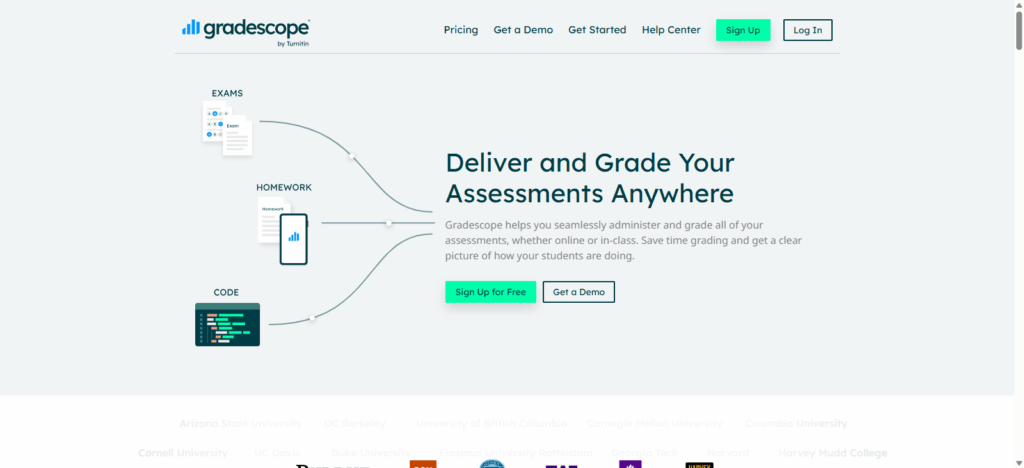
Gradescope reviews a variety of assignments, including essays and problem solving, and quickly identifies patterns in errors for students to work on. Its greatest strength is the efficiency of feedback for both teachers and students, emphasizing fairness and providing clear, corrective guidance that improves understanding and proficiency in writing.
Pros & Cons Gradescope
Pros
- Automated Grading and Feedback – Streams objective assignments and assessments.
- Integration of Various File Types – Combines PDFs, code, and essays.
- Student Performance on Assignments – Gradescope assists in tracking individual learning patterns.
Cons
- Better for Predictable Assignments – Not great for free-form essays.
- May Require Higher Subscription – Not all features are free.
- Subjective Feedback from AI – Assignments with creativity and complex argument evaluation will get poorly executed feedback.
5. Formative AI
Formative AI is among the best tools to receive AI feedback on written assignments because it focuses on learning in real-time. Unlike conventional tools, it gives feedback tailored to the student as work is submitted, focusing on specific elements in the writing, such as the grammar, clarity, strength of the argument, and relevance of the content.
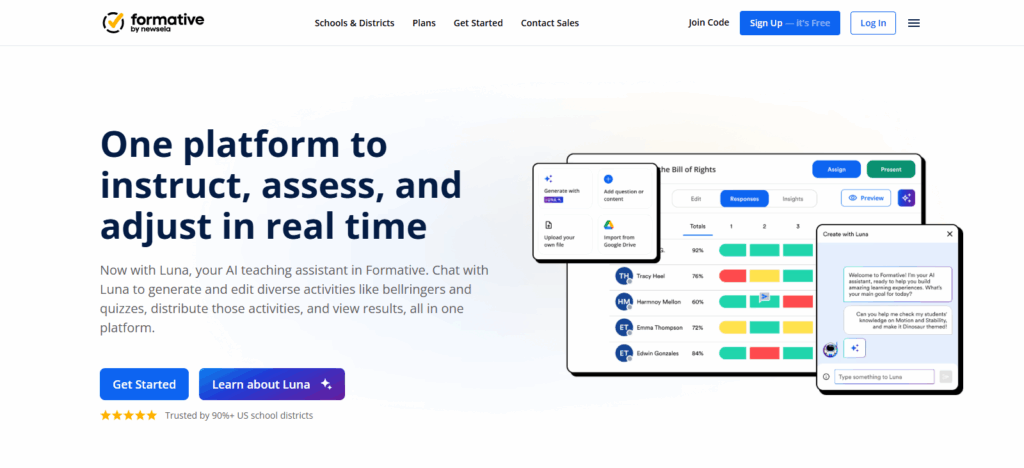
Its outstanding feature is the combination of assessment and actionable feedback which encourages learners to revise and improve their work in real-time. Teachers have the ability to follow improvement and assess challenges that are frequent to the entire class which makes feedback personalized and, at the same time, scalable.
Formative AI uses the learning tools designed by the student as feedback to open channels of learning, which helps students improve their writing in a balanced and constructive manner.
Pros & Cons Formative AI
Pros
- Real-Time Interaction Feedback – Students get immediate comments and suggestions in the process of working.
- Integration of Different Question Types – Supports text, multiple choice questions, and code assignments.
- Performance Monitoring – Educators are able to monitor and adjust feedback given to students.
Cons
- Free Plan is Limited – Full range of features requires payment.
- Content Insights – Feedback given on tasks may not get to the depth of insights on the content.
- Learning curve – Teachers will take some time to become efficient.
6. Mentimeter AI
Mentimeter AI provides a unique approach to receiving AI feedback on written assignments by seamlessly integrating interactive features with AI analysis. Unlike traditional feedback, Mentimeter AI enables students to work in a collaborative space, with AI providing assessments on the clarity, coherence, and overall significance of the work, along with real-time actionable recommendations.
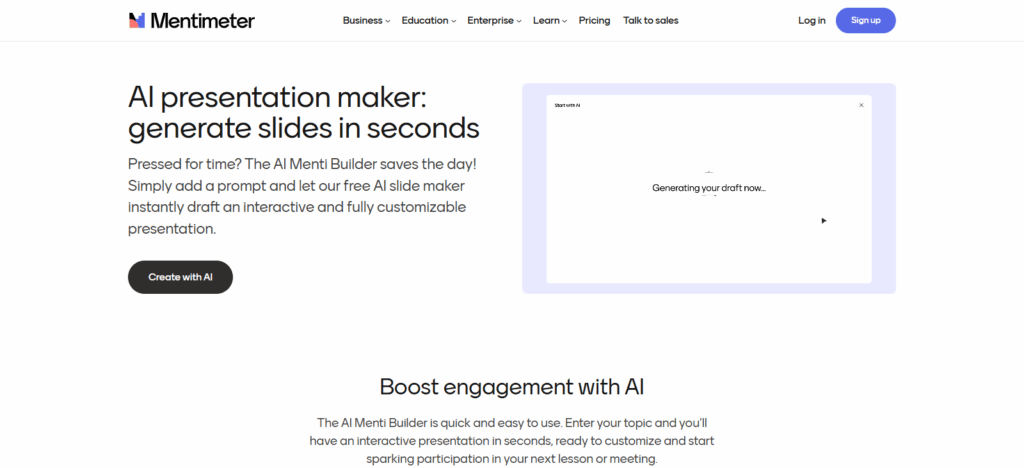
Its unique integration of responsive feedback with interactive presentations, polls, and quizzes transforms evaluation into a lively and participatory experience. Students are not only made aware of their errors but also motivated to learn.
Mentimeter AI turns feedback into an interactive activity which results in a profound understanding of the material, better writing and more active participation in the class.
Pros & Cons Mentimeter AI
Pros
- Visual feedback – Feedback can be transformed to charts and various polls.
- Participant interactivity – Students can use the tool to respond and see AI feedback.
- Enhanced cooperative learning – Quite useful for group work.
Cons
- Not for textual feedback – More useful for presentations than for essay-type feedback.
- Shallow analysis – AI looks at engagement and not the more important aspects of the text.
- Internet required – It’s an online-only tool.
7. Quill.org
Quill.org is among the best options available to receive AI feedback on written assignments, as it emphasizes the improvement of both writing and grammar through varied and engaging activities.
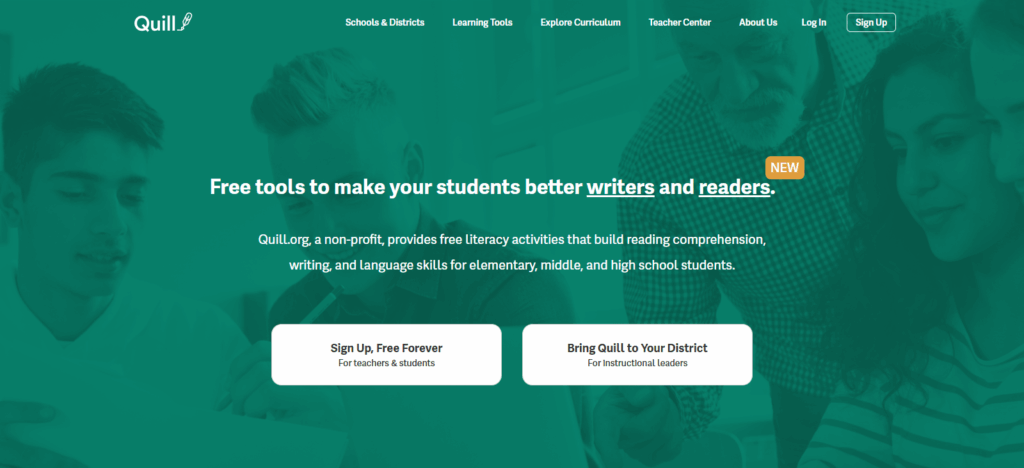
Quill.org is different from conventional proofreading tools because it provides instant, precise feedback on issues related to sentence construction, word choice, and overall clarity, enabling learners to grasp their errors and comprehend the corrections.
Quill.org’s particular advantage is the combination of AI assessment and skill acquisition activities, which enables learners to practice specific problem areas while following the AI’s suggestions. Quill.org uses learners’ errors as teaching opportunities and reinforcement of writing skills, which is pertinent to this type of feedback.
Pros & Cons Quill.org
Pros:
- Writing skills – Quill.org teaches how to improve your grammar and writing structure.
- Instant feedback – It identifies error, explains the correction, and gives feedback.
- Free access to many features – The tool and resources are affordable for schools and students.
Cons:
- Limited advanced style suggestions – It may not identify complex issues in your writing.
- K-12 focus – Quill is not ideal for college writing as most resources are geared to K-12.
- Feedback can be repetitive – Suggestions may feel generic and be overly general.
8. Scribbr AI Proofreader
Scribbr AI Proofreader is among the best tools one can utilize for AI feedback on written assignments because it caters to proofreading and editing at the academic level.
Unlike basic grammar applications, it reviews the feedback in outline form and assesses the structure, clarity, style, and even citation correctness, which is pivotal for assignments to be considered academically appropriate.
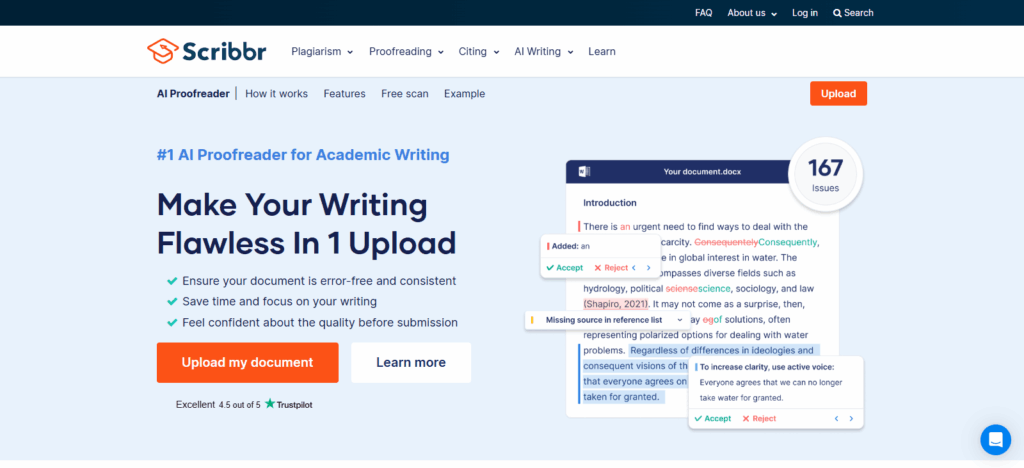
The exclusive integration of AI technology and the oversight of academic writing makes Scribbr AI Proofreader the best at detecting and pointing out the grammar and style issues that many proofreaders neglect.
Scribbr AI Proofreader assists students in argumentation and overall readability, making it an indispensable resource for writing assignments that are academically polished, proficient, and professional.
Pros & Cons Scribbr AI Proofreader
Pros:
- Targeted for academics – It focuses on essays, theses and research papers.
- Plagiarism and citation checks – Scribbr validates proper academic standards with these checks.
- Feedback on language – It critiques grammar, style and readability.
Cons:
- Paid Service– Full feeedback requires a subscription.
- Slower Turnaround– Feedback can take longer than instant tools.
- Not Interactive– Less useful for iterative drafts compared to real time editors.
9. CoGrader
CoGrader is an excellent tool for receiving AI evaluations for written assignments. CoGrader provides evaluations that are automated and detail oriented which saves time while avoiding inaccuracies.
CoGrader goes one step further compared to general writing aids. CoGrader evaluates the technical writing and the content meaning overall writing and offers constructive criticism on grammar, organization, and strength of the arguments.
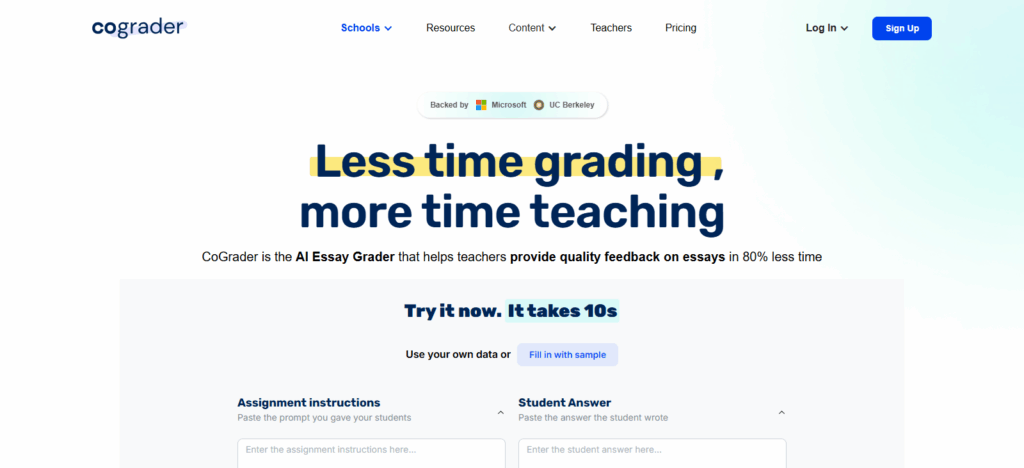
CoGrader’s feedback reports identify and categorize errors and present improvement strategies. This allows students to target their efforts on the most critical areas.
CoGrader offers feedback that is prompt and precise which aids students in sharpening their writing skills efficiently. This level of writing mastery makes CoGrader invaluable for students.
Pros & Cons CoGrader
Pros:
- Peer and AI Grading Combined– Balances human judgement with AI feedback.
- Customizable Rubrics– Teachers can define assessment criteria.
- Tracks Student Progress– Helps identify strengths and weaknesses.
Cons:
- Requires Teacher Setup– Not plug-and-play.
- May Be Complex for Small Assignments– Better for large classes.
- Feedback May Lack Detail– AI may give general comments only.
10. ChatGPT (with custom GPTs or plugins)
When paired with plugins or tailored options, ChatGPT becomes one of the most optimal AI-driven feedback providers for written work because the feedback is highly customized.
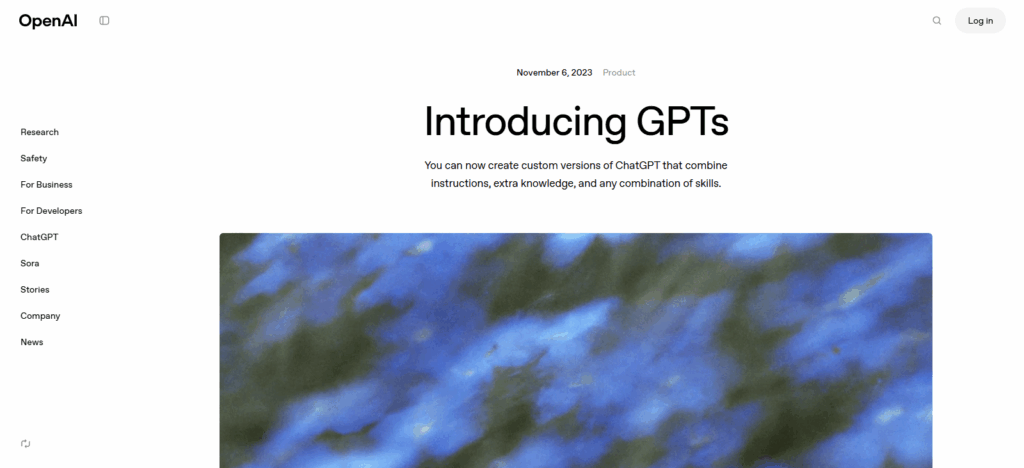
Different from other more rigid feedback systems, it focuses on the specifics of your writing regarding style, tone, and writing purpose, and pinpoint areas that need improvement in grammar, clarity, overall structure, or even substantive issues.
It is able to achieve that because feedback is interactive, follow-up questions can be answered, and justifications for proposed changes are readily available. This combination of interactivity with revision assists not only with the assignment but also with acquisition of writing proficiency that is durable.
Pros & Cons ChatGPT (with custom GPTs or plugins)
Pros:
- Highly Flexible Feedback– Can review grammar, structure, argumentation and style.
- Instant and Interactive– Student can revise drafts and get immedite responses.
- Customizable for Specific Assignments– Plugins can tailor feedback to requirements.
Cons:
- Accuracy Depends on Prompts– Poorly worded requests yield weaker feedback.
- May Overgeneralize– Struggles with specialized academic content.
- No Built-in Plagiarism Detection– Users need external tools for that.
Conclusion
Using AI resources for writing task evaluation streamlines the writing enhancement process for both learners and instructors. AI applications, including Grammarly, provide complete checks on the text’s grammar and stylistic aspects, while TeacherToolAI, Musely, and Scribbr offer individualized analytical comments on the text.
Every application has its advantages geared toward different objectives. Gradescope and Formative AI offer automated grading and pace monitoring, while Mentimeter AI and Quill.org provide dynamic real-time feedback.
ChatGPT and CoGrader offer in-depth flexible resources. Deployment of these AI applications fast-tracks text refinements, enhances text clarity, and supports ongoing writing skill enhancements.
FAQ
Which AI tool is best for grammar and style corrections?
Grammarly is ideal for grammar, punctuation, tone, and style corrections, offering real-time feedback and suggestions for professional and academic writing.
Can AI provide personalized feedback on academic assignments?
Yes, tools like TeacherToolAI, Musely AI, and Scribbr give detailed, tailored feedback based on assignment criteria, helping improve structure, clarity, and content relevance.
Are AI feedback tools suitable for interactive learning?
Absolutely. Formative AI, Mentimeter AI, and Quill.org provide interactive feedback and exercises, helping students learn while improving their writing skills.










